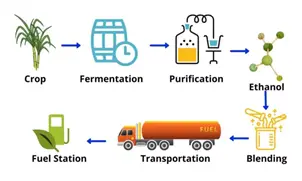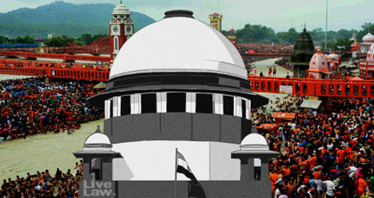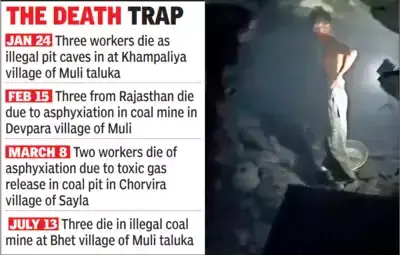Wednesday, 31st July 2024
Centre likely to Lodge Complaint against ILO’s India
Why in the news?
- India, a founding member of the International Labour Organization (ILO), is preparing to lodge a formal complaint against the ILO regarding its India Employment Report 2024, which was released in March this year.
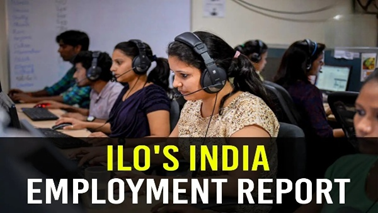
About the International Labour Organization (ILO):
- Creation and Mission:
- Established in 1919 as part of the Treaty of Versailles, the ILO was formed with the belief that lasting peace can only be achieved through social justice.
- It became a specialised agency of the United Nations in 1946.
- The ILO is dedicated to promoting social justice and internationally recognized human and labour rights, emphasising that labour peace is crucial for prosperity.
- Headquarters: Geneva, Switzerland
- Objectives:
- Promote and realise standards and fundamental principles and rights at work.
- Create greater opportunities for both women and men for decent employment and income.
- Enhance the coverage and effectiveness of social protection for all.
- Strengthen tripartism and social dialogue.
- Membership:
- The ILO has 187 member states.
- India is a founding member and has been a permanent member of the ILO Governing Body since 1922.
- Membership requires a nation to accept all obligations of the ILO constitution.
About India Employment Report 2024:
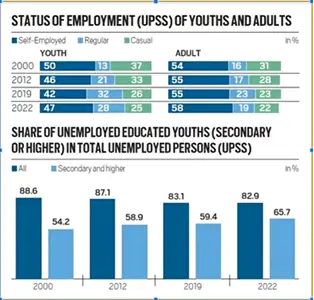
- Publication and Partnership:
- The India Employment Report 2024 is the third edition of regular publications by the Institute for Human Development, in collaboration with the ILO.
- The report examines youth employment challenges amidst evolving economic, labour market, educational, and skills scenarios in India.
- Key Highlights:
- Based on data from National Sample Surveys and Periodic Labour Force Surveys (2000–2022).
- Employment Trends:
- Significant upward trend in female labour market participation from 2019, particularly in rural areas.
- Transition of workforce from agriculture to non-farm sectors.
- Predominance of self-employment and casual employment in India.
- High informal sector engagement with nearly 82% of the workforce.
- Variations in employment outcomes across states and underrepresentation of migration levels.
- Urbanisation and migration are expected to rise significantly, with urban population projected around 607 million by 2030.
- Challenges of Youth Employment:
- Despite a large working-age population, youth participation in the labour market remains lower compared to adults.
- Youth unemployment increased from 5.7% in 2000 to 17.5% in 2019, before declining to 12.1% in 2022.
- Post-lockdown recovery saw additions to the labour force in poor-quality jobs.
- Suggestions:
- The report recommends promoting job creation, improving employment quality, addressing labour market inequalities, strengthening skills development, and bridging knowledge deficits.
Centre’s Likely Complaint Against the ILO Report:
- Government’s Pohrough government initiatives.
What are the Government’s Initiatives Related to Employment?
- Support for Marginalised Individuals for Livelihood and Enterprise (SMILE)
- PM-DAKSH (Pradhan Mantri Dakshta Aur Kushalta Sampann Hitgrahi)
- Mahatma Gandhi National Rural Employment Guarantee Act (MGNREGA)
- Pradhan Mantri Kaushal Vikas Yojana (PMKVY)
- Start Up India Scheme
- Rozgar Mela
- Indira Gandhi Urban Employment Guarantee Scheme- Rajasthan.
|
UPSC Civil Services Examination, Previous Year Questions (PYQs) Prelims Q:1 Disguised unemployment generally means (2013)
Ans: (c)
Mains Q:1 Most of the unemployment in India is structural in nature. Examine the methodology adopted to compute unemployment in the country and suggest improvements. (2023) |
Source: TH
Reasons Behind Leh flight cancellations
Why in the news?
- Recently, High temperatures at high altitudes are disrupting flight operations to and from Leh, which is situated nearly 10,700 feet above mean sea level.
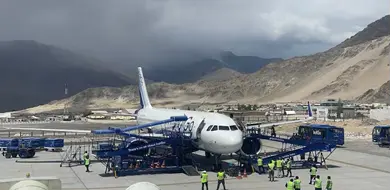
How Do Aircraft Fly?
- Design of Aircraft Wings:
- Aircraft wings are designed with the top surface more curved than the bottom.
- As the aircraft moves, air flows faster over the top of the wings than beneath them.
- Bernoulli’s Principle:
- This principle states that within a horizontal flow of fluid, points of higher fluid speed will have less pressure than points of slower fluid speed.
- The faster-moving air over the wings results in lower pressure above the wings compared to the pressure below.
- This pressure difference generates a force known as lift, which helps the aircraft take off.
High Temperatures and Impact on Aircraft’s Flight:
- Thinning of Air and Loss of Required Lift:
- Higher temperatures cause air to expand and become less dense, resulting in fewer air molecules beneath an aircraft's wings to generate sufficient lift.
- Aircraft lose about 1% lift for every 3°C temperature increase, according to experts in atmospheric science.
- Impact on Engine Performance:
- Thinner air reduces the oxygen available for combustion, thereby decreasing thrust.
- Planes need longer runways and more powerful engines to take off in hotter conditions.
- Example: A runway that is 6,500 feet at 20°C would need to be 8,200 feet at 40°C. In extreme heat, takeoff can become impossible.
- Landing Becomes More Challenging:
- Thinner air affects landing by reducing the effectiveness of reverse thrust, which is used to slow down the aircraft.
- Situation at Leh:
- These issues are particularly felt in airports located at higher altitudes, like Leh, where the air is already thin and runways are often shorter.
Role of Global Warming:
- Global Temperature Rise:
- Since 1880, the global average temperature has risen by at least 1.1°C.
- In India, annual mean temperatures have increased by about 0.7°C since 1900.
- Impact on Air Travel:
- Higher temperatures are already disrupting air travel.
- A 2020 study on Greek airports found that the warming trend reduced the maximum take-off weight of the Airbus A320 by 127 kg per year, impacting lift and thrust.
- A 2023 study predicted that rising temperatures will increase the take-off distance for a Boeing 737–800 by 6% on average by 2071-2080, requiring an additional 113-222 meters at low-altitude airports.
- Adaptation Measures:
- In the short term, airports must adapt by scheduling flights during cooler times, extending runways, and reducing take-off weights.
- Long-term solutions involve significantly reducing fossil fuel consumption to mitigate global warming.
Source: IE
Kerala landslide
Why in the news?
- Recently, at least 144 persons were killed and 197 injured after multiple landslides flattened some three villages in Vythiri taluk of the hilly Wayanad district of Kerala early on July 30.
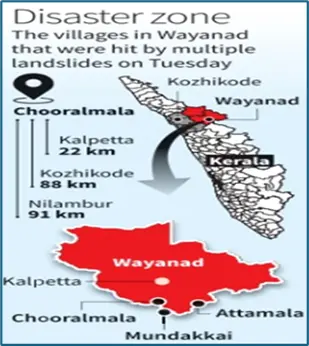
What is Landslide ?
About
- Definition:
- A landslide is defined as the movement of a mass of rock, debris, or earth down a slope.
- Mass Wasting:
- Landslides are a type of "mass wasting," which denotes any down-slope movement of soil and rock under the direct influence of gravity.
- Occurrence:
- Landslides occur mainly in mountainous terrains where there are conducive conditions of soil, rock, geology, and slope.
Classification and mapping of Landslides:
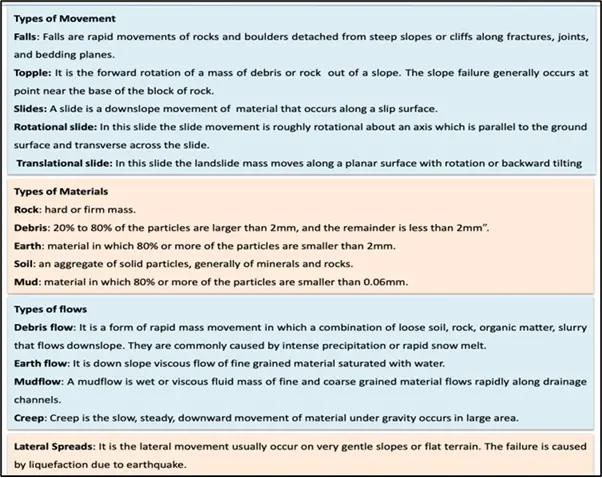
Possible Reasons Behind Wayanad Landslide:
- Heavy Rainfall
- Triggering Factors:
- Extremely heavy rainfall combined with a fragile ecology and increasing population pressures triggered multiple landslides.
- The region received over 140 mm of rainfall in 24 hours, approximately five times the expected amount.
- Heavy rains during the monsoon season consistently trigger landslides in Kerala almost every year.
- Triggering Factors:
- Hilly Terrain with Sharp Slopes
- Susceptibility:
- The western region of Kerala, characterised by hilly terrain with sharp slopes, is highly susceptible to landslides.
- According to ISRO's National Remote Sensing Centre's 2023 landslide atlas, 10 out of the 30 most landslide-prone districts in India are located in Kerala, with Wayanad ranked 13th.
- Terrain Composition:
- The terrain has two distinctive layers: a soil layer atop hard rocks.
- Heavy rainfall saturates the soil with moisture, causing water to flow between the soil and rock layers, weakening the bond and triggering landslides.
- Loss of Green Cover
- A 2021 study on landslide hotspots in India revealed that 59% of total landslides in Kerala occurred in plantation areas.
- Loss of forests increases the terrain's fragility, especially in areas prone to heavy rains in the Western Ghats.
- Climate Change
- Climate scientists attribute the warming of the Arabian Sea as a cause for extremely heavy and unpredictable rain patterns in Kerala.
- The warming of the southeast Arabian Sea causes the atmosphere above this region, including Kerala, to become thermodynamically unstable.
- This leads to the formation of deep cloud systems, resulting in extremely heavy rainfall in shorter periods, increasing the risk of landslides.
- Susceptibility:
- Environmental Neglect and Mining
- Ecological Sensitivity:
- Since 2011, the "Western Ghats Ecology Expert Panel" under ecologist Madhav Gadgil recommended declaring the Wayanad hill ranges ecologically sensitive.
- The panel suggested that 75% of the 129,037 sq km area of the mountain range be declared ecologically sensitive due to dense forests, a large number of endemic species, and unique geology.
- Regulation Recommendations:
- The panel recommended zoning the region based on ecological sensitivity, with the most vulnerable sections monitored and protected from rampant commercial activity.
- Recommendations included banning mining, quarrying, new thermal power plants, hydropower projects, and large-scale wind energy projects in ecologically sensitive zones.
- Implementation Challenges:
- The suggestions by the panel have not been implemented even after 14 years due to resistance from state governments, industries, and local communities.
- Ecological Sensitivity:
Government Initiatives to Mitigate Landslide Risk:
- National Landslide Risk Management Strategy (2019):
- A comprehensive document addressing all components of landslide disaster risk reduction, including hazard mapping, monitoring, early warning systems, awareness programs, capacity building, and mitigation strategies.
- Landslide Risk Mitigation Scheme (LRMS):
- A scheme under preparation to provide financial support for site-specific landslide mitigation projects recommended by states. It focuses on disaster prevention, mitigation, and R&D for early warning systems.
- Flood Risk Mitigation Scheme (FRMS):
- A proposed scheme covering pilot projects for flood shelters, river basin-specific early warning systems, and digital elevation maps for inundation models to improve flood forecasting and evacuation plans.
- National Guidelines on Landslides and Snow Avalanches:
- Guidelines prepared by the National Disaster Management Authority (NDMA) outlining strategies for hazard assessment, vulnerability analysis, risk management, and community participation.
- Landslide Atlas of India:
- A document by the National Remote Sensing Centre (NRSC) providing detailed information on landslides across India, including damage assessments and locations of landslide-prone areas.
|
UPSC Civil Services Examination, Previous Year Questions (PYQs) Mains: Q:1 Differentiate the causes of landslides in the Himalayan region and Western Ghats. (2021) Q:2 Describe the various causes and the effects of landslides. Mention the important components of the National Landslide Risk Management Strategy. Q:3 The Himalayas are highly prone to landslides.” Discuss the causes and suggest suitable measures of mitigation. (2016) |
Source: IE
Supreme Court begins week-long special Lok Adalat drive
Why in the news?
- The Supreme Court of India has initiated a special Lok Adalat drive as part of its 75th anniversary celebrations.
- Commencing at 2 p.m., seven Benches, including one led by Chief Justice D.Y. Chandrachud, are operating as Lok Adalats to resolve long-pending disputes.
- This initiative, ongoing until August 3, aims to expedite the resolution of cases such as matrimonial disputes, property disputes, motor accident claims, land acquisition, compensation, and service and labour disputes.
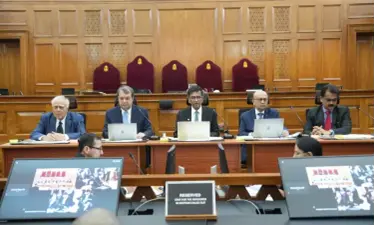
What is Lok Adalat?
- Meaning and Principles:
- The term ‘Lok Adalat’ translates to ‘People’s Court’ and is inspired by Gandhian principles.
- It reflects an ancient adjudication system still relevant in modern times.
- Nature and Origin:
- Lok Adalat is part of the Alternative Dispute Resolution (ADR) system, providing informal, cost-effective, and swift justice.
- The first Lok Adalat was held in Gujarat in 1982 as a voluntary conciliatory mechanism, later given statutory recognition under the Legal Services Authorities Act, 1987.
Organisation:
- Authorities:
- Lok Adalats can be organised by State/District Legal Services Authorities or Supreme Court/High Court/Taluk Legal Services Committees, as deemed appropriate.
- Composition:
- Typically, a Lok Adalat includes a judicial officer as the chairman, with an advocate and a social worker as members.
- NALSA and other Legal Services Institutions facilitate these Adalats.
- NALSA:
- Established under the Legal Services Authorities Act, 1987 (effective from 9th November 1995), NALSA aims to provide free legal services to underprivileged sections.
- The 2002 amendment introduced Permanent Lok Adalats for public utility service disputes.
Jurisdiction:
- Scope: Lok Adalats handle:
- Cases pending before any court.
- Matters within court jurisdiction not yet filed.
- Referral: Cases may be referred to Lok Adalats if:
- Both parties agree, or one-party requests referral, or
- The court determines that the Lok Adalat can resolve the matter.
- Pre-litigation: Disputes can be referred to Lok Adalats if a party applies before formal litigation begins.
- Types of Cases: Includes matrimonial disputes, compoundable criminal offences, land acquisition, labour disputes, and bank recovery cases. Lok Adalats do not handle non-compoundable offences.
Powers:
- Authority:
- Lok Adalats possess powers similar to those of Civil Courts under the Code of Civil Procedure (1908).
- They can set their own procedural rules and their proceedings are considered judicial under the Indian Penal Code (1860) and the Code of Criminal Procedure (1973).
- Decisions:
- Awards are treated as Civil Court decrees and are final and binding. Appeals against Lok Adalat awards are not permitted.
Benefits:
- Cost: No court fees are charged at Lok Adalats; any previously paid fees are refunded if the dispute is settled.
- Efficiency: Lok Adalats offer procedural flexibility and speedy resolution without rigid procedural constraints.
- Direct Interaction: Parties interact directly with the adjudicators through their counsel, unlike regular court proceedings.
- Finality: Lok Adalat awards are binding and non-appealable, minimising delays in dispute resolution.
Difference between Lok Adalat and a Law Court:
- Nature:
- Lok Adalat: Functions as an informal forum for dispute resolution established by legal aid providers and community-driven entities.
- Law Court: A formal judicial body established by the legal system to adjudicate disputes based on established laws and procedures.
- Purpose:
- Lok Adalat: Aims to facilitate amicable settlements by allowing parties to resolve grievances against state agencies or individuals through mutual consent and negotiation.
- Law Court: Seeks to deliver justice by applying legal statutes and precedents to determine the outcome of disputes based on legal arguments and evidence.
- Procedure:
- Lok Adalat: Employs an informal approach, focusing on mediation and compromise without strict adherence to procedural laws.
- Law Court: Follows a formal judicial process with strict adherence to procedural laws and formalities, including the presentation of evidence and legal arguments.
- Decision Binding:
- Lok Adalat: Decisions are binding and treated as a decree of a civil court but are reached through mutual agreement rather than adversarial proceedings.
- Law Court: Judgments are binding and enforceable based on legal principles and judicial authority, following a formal trial process.
|
UPSC Civil Services Examination Previous Year Question (PYQ) Prelims Q. With reference to Lok Adalats, which of the following statements is correct? (2010)
Ans: (d) |
Source: TH
Delhi joins Quad on Ukraine war
Why in the news?
- The Quad Ministerial Meeting recently took place in Tokyo, with External Affairs Minister S. Jaishankar, US Secretary of State Antony Blinken, Australian Foreign Minister Penny Wong, and Japanese Foreign Minister Yoko Kamikawa participated.
- Following the meeting, they issued a joint statement expressing enthusiasm for the upcoming Quad summit in India, emphasising its significance for strengthening their cooperative efforts.
- The ministers reaffirmed their commitment to promoting a free, open, and inclusive Indo-Pacific region and highlighted the importance of their partnership in tackling both regional and global issues.

What is the Quad?
- About:
- The Quad, or Quadrilateral Security Dialogue, is a coalition of four democracies: India, Australia, the US, and Japan.
- Its purpose is to promote a free and open international order based on the rule of law in the Indo-Pacific region.
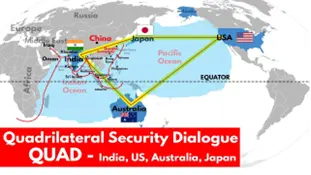
- Objectives: The Quad aims to achieve:
- Maritime Security: Ensuring safe and secure sea lanes.
- Covid-19 Crisis Management: Particularly through vaccine diplomacy.
- Climate Change Mitigation: Addressing environmental risks.
- Investment Ecosystem: Fostering regional economic growth.
- Technological Innovation: Boosting advancements in technology.
Evolution of Quad:
- 2004: Formed initially as an informal alliance for disaster relief post-Indian Ocean tsunami.
- 2007: Proposed as a formal group by Japanese Prime Minister Shinzo Abe but faced resistance.
- 2017: Reinvigorated during ASEAN Summits with renewed negotiations.
- 2019: Upgraded to ministerial level.
- 2021: Hosted its first virtual summit followed by the first in-person meeting in September.
- Divergences:
- India has had differences with other Quad members (US, Japan, Australia) regarding Russia and specific bilateral issues.
- Despite these, the Quad continues to focus on collaboration, particularly in countering China's influence in the region.
Key Highlights of the Quad Ministerial Meeting
- Upcoming Summits:
- India will host the Quad Leaders’ Summit in 2024.
- The USA will host the next Quad Foreign Ministers’ Meeting in 2025.
- Ukraine War:
- Leaders expressed deep concern over the Ukraine war, emphasising respect for sovereignty and territorial integrity, a stance not typically reflected in India's national statements on the conflict.
- Discussed the war’s negative impacts on global food and energy security, particularly affecting developing countries.
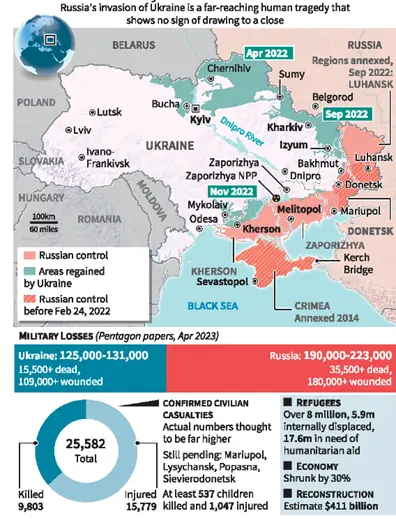
- Free and Open Indo-Pacific:
- Reaffirmed commitment to a region free from domination and coercion, implicitly addressing China’s assertive actions.
- Achievements of Quad:
- Indo-Pacific Maritime Domain Awareness Initiative: Connecting information fusion centres.
- Open-RAN Deployment: Implemented in Palau.
- Space-Based Climate Warning System: To be launched in Mauritius.
- Off-Grid Solar Projects: Development across the Indo-Pacific region.
|
UPSC Civil Services Examination Previous Year Question (PYQ) Mains Q:1 Quadrilateral Security Dialogue (Quad) is transforming itself into a trade bloc from a military alliance, in present times Discuss. (2020) |
Source: IE
ISTIC-UNESCO
Why in the news ?
- The International Science, Technology, and Innovation Centre for South-South Cooperation (ISTIC), under UNESCO's auspices, is hosting a significant STI Conclave titled "Traditional Knowledge for Sustainable Livelihoods" from July 29-31, 2024, in New Delhi, India.
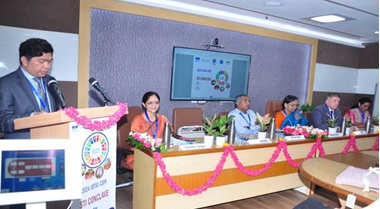
About ISTIC-UNESCO:
- Establishment and Hosting:
- The International Science, Technology and Innovation Centre for South-South Cooperation under the Auspices of UNESCO (ISTIC) is a UNESCO Category 2 Centre.
- Hosted by the Malaysian Government since 2008.
- Agreements and Mission:
- Hosting is based on a six-year Agreement between the Malaysian Government, represented by the Ministry of Science, Technology and Innovation (MOSTI), and UNESCO.
- The current Agreement runs from February 2022 until January 2028.
- Mission: To be “A leading international platform offering sustainable programs and services in producing holistic talents towards institutional excellence and augmenting sustainable development for South-South Cooperation.”
- Conclave Objectives:
- Promote understanding and enhance academic and professional capabilities under the theme “Strengthening Competencies in Digitization, Preservation and Protection of Traditional Knowledge (TK) – Intellectual Property (IP) and People’s Rights.”
- Provide a platform for participants from Indonesia, Philippines, Nepal, Democratic Republic of Congo, Kenya, Malaysia, and India to exchange information on challenges related to TK and learn best practices in safeguarding it.
- Emphasise collaborative learning models and expand partnerships and networks to address regional development challenges through sustainable living and local knowledge systems.
Key Speeches:
- Dr. N. Kalaiselvi:
- Emphasised the relevance of the Conclave in addressing global concerns about sustainable livelihoods.
- Highlighted the importance of raising awareness among youth about the value of traditional knowledge.
- Recognized the Conclave's role in integrating traditional knowledge with modern science and technology.
- Dr. D. Srinivasa Reddy:
- Discussed CSIR's activities in validating, innovating, and integrating traditional medicines with modern S&T to improve healthcare.
- Dr. Benno Boer:
- Elaborated on sustainability through education, science, and culture.
- Stressed the importance of living in harmony with nature.
- Spoke about UNESCO’s biodiversity initiatives and the LINKS programs, underscoring the need to understand and preserve local knowledge systems.
What is a UNESCO Category 2 Centre?
- Definition and Network:
- These institutes and centres under the auspices of UNESCO form a global network of institutions of excellence in the Organization’s domains of competence.
- Partnership and Access:
- Privileged partners of UNESCO, with access to UNESCO’s logo and international and intergovernmental bodies and networks.
- Leverage UNESCO’s international reach and convening powers.
- Role in Strategy:
- Category 2 institutes and centres are integral parts of UNESCO’s Comprehensive Partnership Strategy.
Source: PIB
National Metallurgist Awards 2024
Why in the news?
- The Ministry of Steel, Government of India, has recently invited applications for the National Metallurgist Awards (NMA)-2024 from individuals in Industry, Research, and Academia.
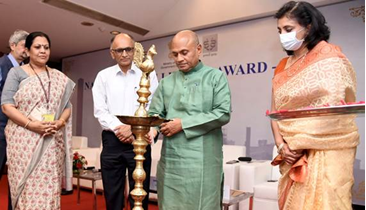
About National Metallurgist Awards:
- Establishment:
- Instituted in 1962 by the then Ministry of Steel & Mines to recognize and honour outstanding contributions by metallurgists in the metallurgical field.
- Purpose:
- The awards acknowledge exceptional work in operations, research, design, education, waste management, and energy conservation within the metallurgical sector.
- Nomination Process:
- Nominations are invited online through the Ministry of Steel’s portal or a centralised portal developed by the Ministry of Home Affairs.
- Nominations can be submitted by companies/organisations or through self-nomination by the public.
- Eligibility:
- The awards are given annually and are restricted to Indian nationals.
- Award Categories:
- Lifetime Achievement Award
- National Metallurgist Award
- Young Metallurgist Award (Environment and Metal Science)
- Award for R&D in Iron & Steel Sector
- History:
- The first award was conferred in 1963 and has been awarded annually since then.
Source: PIB
Alderman
Why in the news?
- The Supreme Court recently announced that it will soon pronounce its verdict on a plea by the Delhi government challenging the lieutenant governor's power to nominate aldermen to the Municipal Corporation of Delhi.
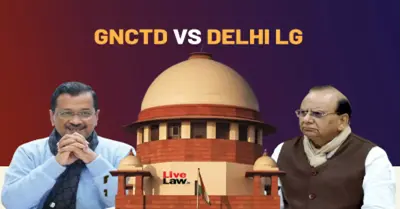
About Alderman:
- Origin:
- The term "alderman" is derived from the combination of "old" and "man," indicating an older or experienced person.
- Initially, it referred to elders of a clan or tribe but later evolved to denote the king's viceroys, regardless of age.
- Eventually, it came to signify the "chief magistrate of a county" with both civil and military responsibilities.
- Historical Usage:
- By the 12th century CE, the term began to be associated with municipal governments.
- It was used to describe officers of municipal bodies, a usage that continues to the present day.
Alderman in India:
- Role in Municipalities:
- In India, the General Body of a Municipality or Municipal Corporation is composed of elected representatives called Councillors.
- Councillors can nominate experts in their disciplines of the city to become members of this body, known as 'Aldermen'.
- Aldermen cannot cast votes in the mayoral election.
- As ward committee members, they assist the house in making decisions of public importance.
Case of Delhi:
- Delhi Municipal Corporation Act of 1957:
- The Lieutenant Governor of the National Capital Territory of Delhi has the authority to nominate ten individuals above the age of 25 to the corporation.
- These individuals are believed to have specialised expertise or experience in municipal administration
Source: HT
Mekedatu Project
Why in the news?
- Recently, the Karnataka Chief Minister said his government was ready to discuss with Tamil Nadu regarding implementation of the Mekedatu project across river Cauvery.
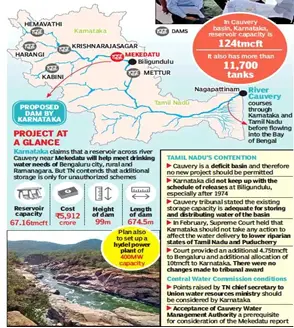
About the Mekedatu Project:
- Location: The Mekedatu project is a multipurpose project involving the construction of a balancing reservoir near Kanakapura in Ramanagara district, Karnataka.
- Geography: Mekedatu, meaning goat’s leap, is a deep gorge situated at the confluence of the rivers Cauvery and its tributary Arkavathi.
- Objectives: The primary objectives are to provide drinking water to Bengaluru and neighbouring areas (totaling 4.75 TMC) and generate 400 MW of power.
Benefits of the Project:
- Water Supply:
- Addressing the growing demand for drinking water in Bengaluru and its adjoining areas.
- Alleviating water scarcity and reducing dependence on groundwater.
- Renewable Energy:
- Generating 400 MW of hydroelectric power.
- Contributing to renewable energy production and reducing carbon emissions.
- Water Management:
- Regulating the flow of water to prevent floods and droughts.
- Providing benefits to farmers and communities.
Current Status:
- Consent Issue: Karnataka has not obtained the consent of Tamil Nadu, which is mandatory.
- Approval and Clearances: The project is still in its preliminary stage and has not obtained the necessary clearances and approvals from authorities such as:
- Central Water Commission (CWC)
- Ministry of Environment, Forest and Climate Change (MoEFCC)
- National Board for Wildlife (NBWL)
Opposition By Tamil Nadu:
- Impact on Water Flow: Tamil Nadu argues that the Mekedatu dam would significantly reduce the water flow downstream, negatively impacting the state's agricultural activities and water supply.
- Dependence on Cauvery River: The Cauvery River is a crucial water source for Tamil Nadu, supporting its farming communities and meeting the drinking water needs of its residents.
- Legal Concerns: The state claims that the project violates the final judgement of the Cauvery Water Disputes Tribunal (CWDT), which allocated a specific share of water to each riparian state, including Tamil Nadu.
|
UPSC Civil Services Examination, Previous Year Question (PYQ) Prelims Q:1 Which of the following Protected Areas are located in the Cauvery basin? (2020)
Select the correct answer using the code given below:
Ans: (c)
Mains Q:1 Constitutional mechanisms to resolve the inter-state water disputes have failed to address and solve the problems. Is the failure due to structural or process inadequacy or both? Discuss. (2013) |
Source: NDTV
Report on Currency and Finance (RCF) 2023-24
Why in the News?
- According to the "Report on Currency and Finance (RCF) for the year 2023-24," released by the Reserve Bank of India (RBI), India's digital economy is projected to comprise 20% of the country's GDP by 2026, up from its current contribution of 10%.
- This projection highlights the transformative potential of digitalization in finance and its significant impact on India's economic landscape.
What is the Report on Currency and Finance?
- About:
- The "Report on Currency and Finance" is an annual publication by the Reserve Bank of India (RBI).
- It provides a comprehensive analysis of various aspects of the Indian economy and financial system.
- Theme:
- The theme for the report is "India’s Digital Revolution."
- It examines the transformative effects of digitalization across different sectors in India, with a particular focus on the financial sector.
- Dimensions:
- The report outlines how digital technologies are transforming economic growth, financial inclusion, public infrastructure, and regulatory frameworks.
- It also addresses the opportunities and challenges associated with these changes.
Key Highlights from the Report on Currency and Finance 2023-24:
- Expansion of Financial Services:
- Technological advancements have significantly enhanced the depth and scope of digital financial services.
- The report identifies high potential for further financial inclusion in India through the application of digital technologies.
- Progress in financial inclusion is reflected in the Reserve Bank’s Financial Inclusion Index and a reduction in account access disparities between income groups.
- In rural areas, 46% of the population are wireless phone subscribers, and 54% are active internet users.
- More than half of FinTech users and over a third of digital payment users are from semi-urban and rural areas, indicating potential for increased digital penetration and bridging the rural-urban divide.
- Over two lakh gram panchayats have been connected through BharatNet in the past decade, facilitating e-health, e-education, and e-governance services in rural regions.
- Mobile Penetration:
- Internet penetration in India stood at 55% in 2023, with the internet user base growing by 199 million in the last three years.
- India has the lowest global cost per gigabyte (GB) of data at an average of Rs. 13.32 per GB.
- The country also ranks among the highest in global mobile data consumption, with an average per-user per-month usage of 24.1 GB in 2023.
- India has approximately 750 million smartphone users, a number expected to reach around one billion by 2026.
- India is anticipated to become the second-largest smartphone manufacturer globally within the next five years.

- Digital Economy:
- Current Contribution: The digital economy currently constitutes 10% of India's GDP.
- Future Projection: By 2026, this contribution is projected to double, reaching 20% of GDP. This growth is attributed to rapid advancements in digital infrastructure and financial technology.
- Impact: Digitization is enhancing banking infrastructure and public finance systems, leading to more efficient direct benefit transfers and tax collections.
- India Stack:
- Components:
- Aadhaar: The largest biometric-based identification system globally, with coverage for 1.38 billion ID holders.
- Unified Payments Interface (UPI): A real-time, low-cost transaction platform that has experienced a tenfold increase in transactions over the past four years, significantly contributing to financial inclusion.
- DigiLocker: A cloud-based storage system that offers secure access to documents and streamlines service delivery.
- Components:
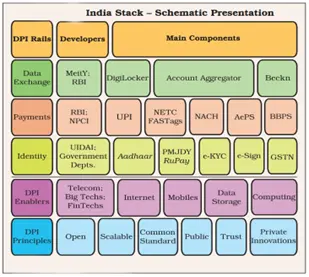
Internationalisation of Digital Public Infrastructure (DPI):
- Digital Identity Solutions:
- India is collaborating with other nations to develop digital identity solutions through the Modular Open-Source Identity Platform (MOSIP) programme.
- Interlinkage of Payment Systems:
- The Unified Payments Interface (UPI) is being integrated with fast payment systems in other countries, including Singapore’s PayNow, the United Arab Emirates’ (UAE) Instant Pay Platform (IPP), and Nepal’s National Payments Interface (NPI), to facilitate cost-effective and rapid remittances.
- Expansion of UPI and RuPay:
- India is partnering with central banks and foreign payment service providers to extend the acceptance of UPI and RuPay beyond its borders.
- This includes countries such as Bhutan, Mauritius, Singapore, and the UAE.
- Beckn Protocol Sharing:
- The Beckn protocol is being shared with other nations to enable the provision of public and private services through open, lightweight, and decentralised specifications.
- This protocol supports the creation of open, peer-to-peer decentralised networks for cross-sector economic transactions.
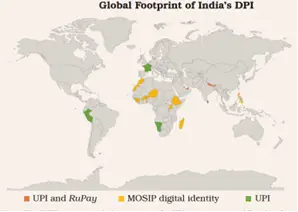
India’s Digital Revolution:
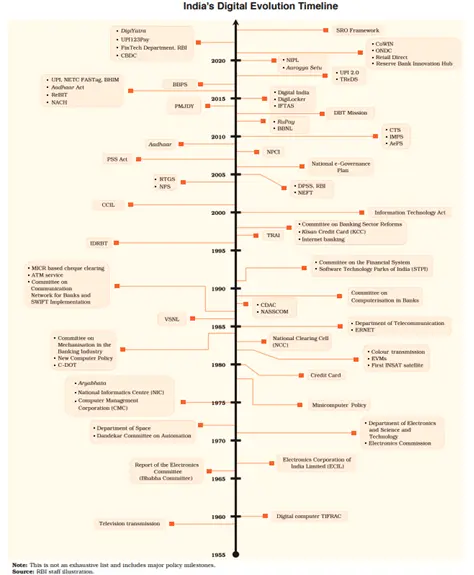
Challenges Posed by Digitalisation:
- Impact on Financial Markets:
- Digitalisation introduces complex financial products that can impact market stability, with digital players and unreliable funding models increasing system vulnerabilities.
- Fear of Monopolisation:
- While UPI applications have increased customer options, a few applications dominate transactions. To address this, NPCI limits market share for individual providers to 30% by December 2024.
- Cybersecurity Challenges:
- The rise in digitalisation has led to a sharp increase in cybersecurity incidents, with CERT-In reporting over 1.32 million incidents in 2023. Data breaches cost an average of USD 2.18 million in India.
- Consumer Protection Issues:
- Digitalisation has led to deceptive practices ("dark patterns") and raised concerns about data protection and privacy, potentially compromising consumer trust.
- Transformation of Workforce Composition:
- Digital technologies are altering job quality, skill requirements, and labour policies. AI in financial services shifts roles to higher-skilled tasks, automating routine functions and aiding decision-making.
- Sector Changes (2013-2019):
- Support roles in the financial sector declined, while the number of professionals and technicians increased.
- Challenges in Private Sector Banks:
- High turnover rates in private sector banks in 2022-23 pose risks, including loss of institutional knowledge and increased recruitment costs.
Steps Taken to Address Challenges:
- Financial and Digital Inclusion:
- Digital Banking Units (DBUs) have been established.
- Enhanced UPI with offline and conversational payments in local languages.
- Payment Infrastructure Development Fund (PIDF) launched to expand payment infrastructure.
- Digitalisation of agricultural finance is in progress.
- Customer Protection:
- RBI issued Guidelines on Digital Lending to improve loan servicing, disclosures, grievance redressal, credit assessment standards, and data privacy.
- Reserve Bank-Integrated Ombudsman Scheme (RB-IOS) enhances grievance redress mechanisms.
- Public awareness campaigns like ‘RBI Kehta Hai’ and e-BAAT programme educate on digital payment products and fraud prevention.
- Data Protection:
- Data localisation for payments data has been implemented.
- Guidelines prevent digital lending apps from accessing private information without explicit user consent.
- Card-on-file tokenization (CoFT) introduced to enhance digital payment security.
- Cyber Security:
- Two-factor authentication and increased customer control over card usage have been promoted.
- Faster turnaround times for transaction failures and increased supervisory oversight have been implemented.
- Comprehensive guidelines for IT and Cyber Risk management issued by the RBI.
- FinTech Regulation:
- RBI launched the Regulatory Sandbox scheme, Reserve Bank Innovation Hub, and FinTech Hackathons to foster FinTech innovations.
- Digital Technologies in Regulation and Supervision:
- Digital tools like DAKSH system are used to enhance supervisory processes.
- Integrated Compliance Management and Tracking System (ICMTS) and Centralised Information Management System (CIMS) are implemented to improve data management and analytics.
|
UPSC Civil Services Examination Previous Year Questions (PYQs) Prelims: Q:1 Consider the following statements: (2021)
Which of the above statements are correct?
Ans: (c)
Mains: Q:1 Implementation of Information and Communication Technology (ICT) based Projects/Programmes usually suffers in terms of certain vital factors. Identify these factors and suggest measures for their effective implementation. (2019) |
Share the article
Edukemy’s Current Affairs Quiz is published with multiple choice questions for UPSC exams
MCQ
Get Latest Updates on Offers, Event dates, and free Mentorship sessions.

Get in touch with our Expert Academic Counsellors 👋
FAQs
UPSC Daily Current Affairs focuses on learning current events on a daily basis. An aspirant needs to study regular and updated information about current events, news, and relevant topics that are important for UPSC aspirants. It covers national and international affairs, government policies, socio-economic issues, science and technology advancements, and more.
UPSC Daily Current Affairs provides aspirants with a concise and comprehensive overview of the latest happenings and developments across various fields. It helps aspirants stay updated with current affairs and provides them with valuable insights and analysis, which are essential for answering questions in the UPSC examinations. It enhances their knowledge, analytical skills, and ability to connect current affairs with the UPSC syllabus.
UPSC Daily Current Affairs covers a wide range of topics, including politics, economics, science and technology, environment, social issues, governance, international relations, and more. It offers news summaries, in-depth analyses, editorials, opinion pieces, and relevant study materials. It also provides practice questions and quizzes to help aspirants test their understanding of current affairs.
Edukemy's UPSC Daily Current Affairs can be accessed through:
- UPSC Daily Current Affairs can be accessed through Current Affairs tab at the top of the Main Page of Edukemy.
- Edukemy Mobile app: The Daily Current Affairs can also be access through Edukemy Mobile App.
- Social media: Follow Edukemy’s official social media accounts or pages that provide UPSC Daily Current Affairs updates, including Facebook, Twitter, or Telegram channels.

